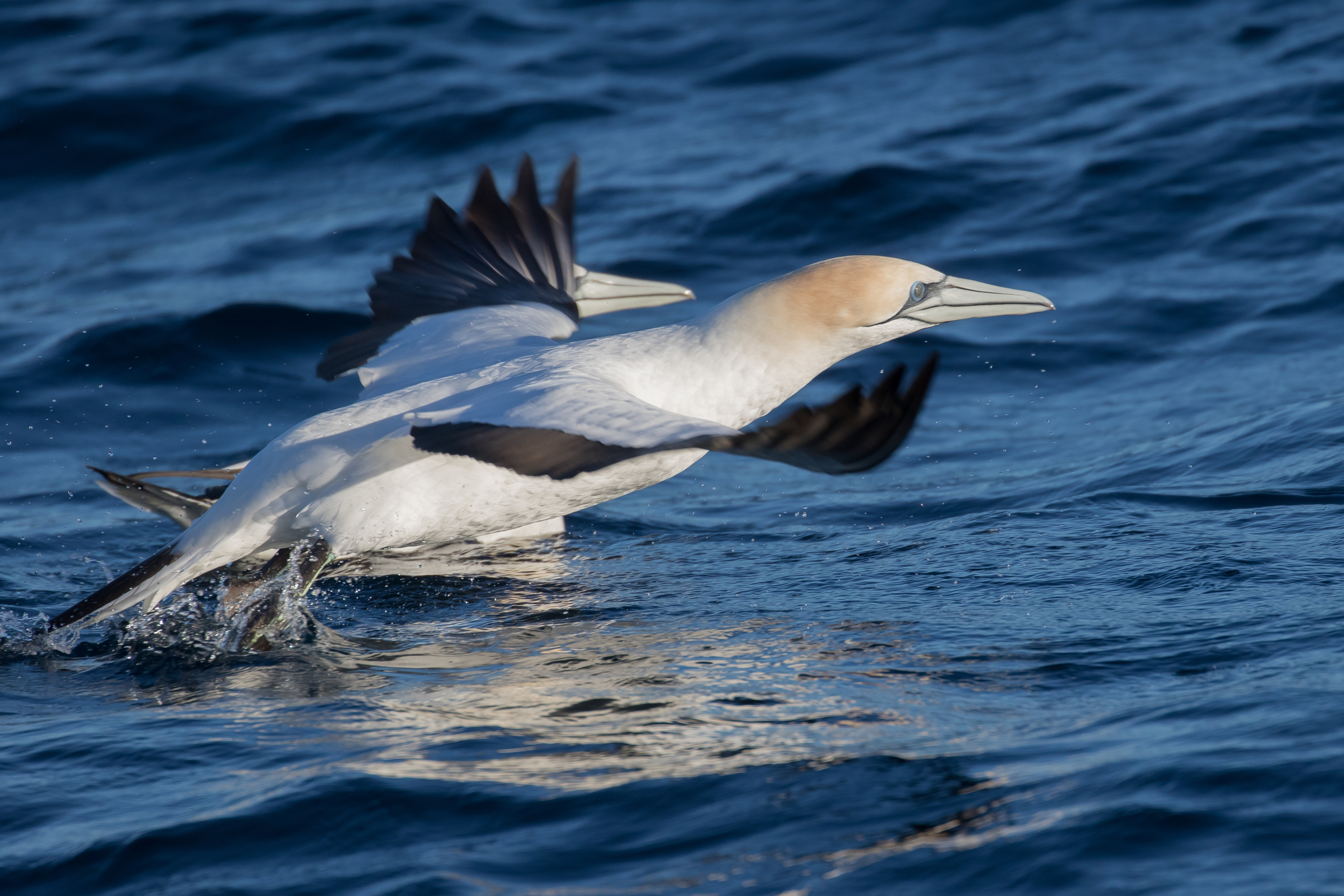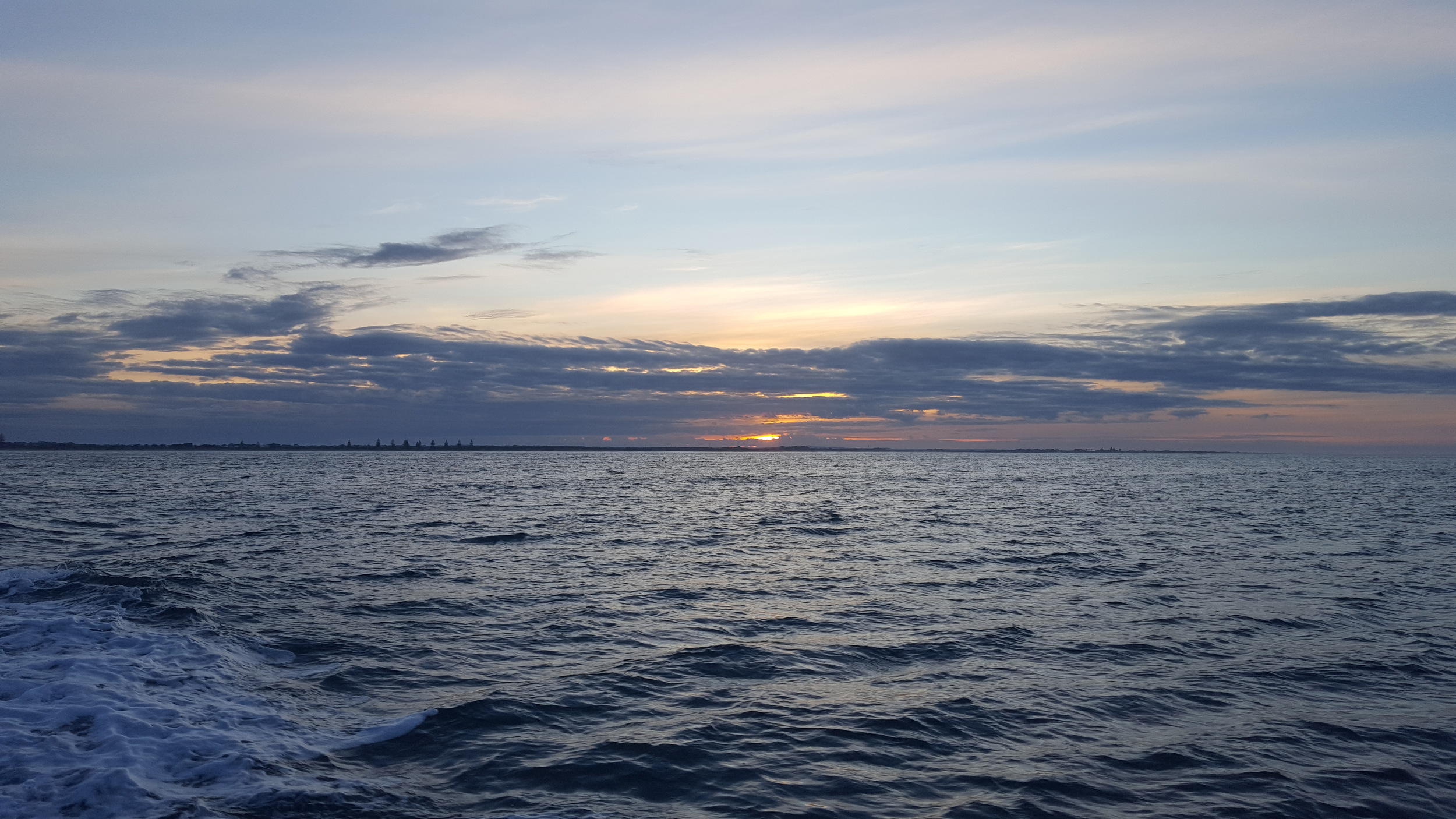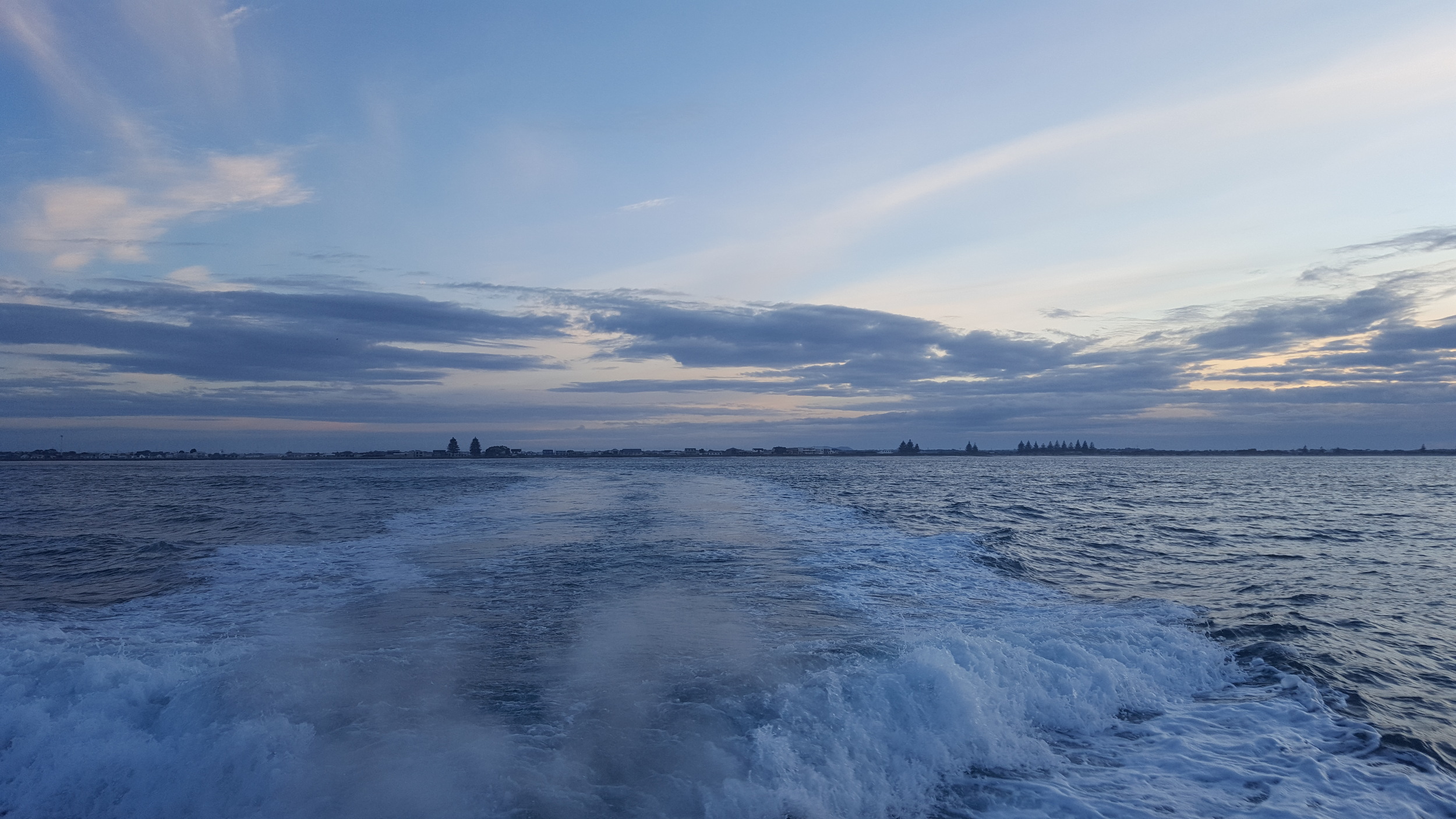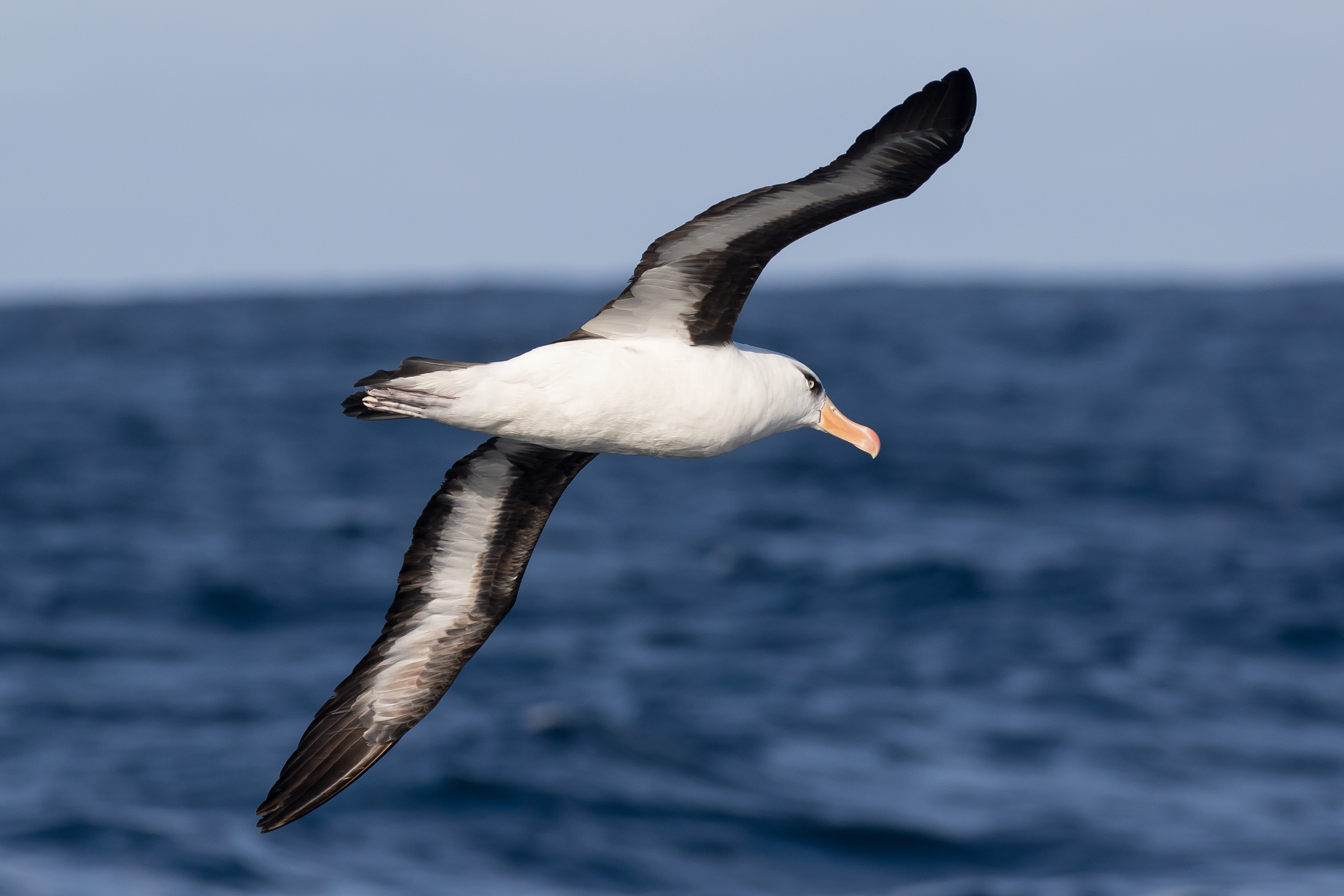It’s not been a productive year for pelagics out of Port MacDonnell. Six trips – around one a month – have been arranged but then all cancelled. The Southern Ocean seems “big” this year and each Sunday seems to have coincided with 6m swells. Maybe the local lobster and tuna fisherman go out in that, but the charters won’t risk random punters in those conditions. I was booked on trips in March and May, but both cancelled. Then hopes were raised that we could get out on a hastily arranged substitute in early June in what looked like ideal Southern Ocean conditions. But then that too was cancelled. Salt was rubbed into the wounds by reports of various beach-wrecked Southern Fulmar on the south coast (multiple birds were found in the Coorong), a Light-mantled Sooty Albatross was found dead on the east coast, and even an exhausted Grey-headed Albatross hung around Woodman Point (where I saw my first ever Sanderling in my first few weeks as a birder) was twitched by many WA and even some interstate birders, until it was taken into care, moribund.
Finally my fourth attempt to get out to sea seemed to get the green light on 16 June. We were now very much at the tail end of that epic weather system. We hoped that some of the goodies would still be hanging around, though there was nervousness that the 5 days previous had seen steady northerlies, so maybe they would have been blown back out to sea. We had our fingers crossed for a Southern Fulmar or Grey-headed Albatross but I was a little bit pessimistic.
For the first time since 2014 Paul Coddington and I had managed to book on the same trip so we drove down together. Setting out from Adelaide at 8am we made good time to Keith. The servo here is about half way and a regular stopping point. The town itself is unattractive and the servo has some of the shitest coffee around, but the gums have small population of Blue-faced Honeyeaters. While Paul filled the car I tracked one down amongst the Miners and Musk Lorikeets.
Next stop, as the weather deteriorated, was Bool Lagoon, just beyond Naracoort. The lagoon itself is very dry, but 600 or more Magpie Geese remained in the wetter areas, and a friendly female Flame Robin was found on the road near the start of the boardwalk. We managed to avoid getting rained on too much.


Closer to Mt Gambier, acting on a tip from Bob Green, we tried for Red-tailed Black-cockatoo. A big flock of Yellow-tails got the heart racing initially but it was getting dark and unsure of the exact location for the RTBC flock we retreated – as it turns out just a km or so too early.
As usual, dinner in the Victoria Hotel was a welcome social hors-d’oeuvre, but getting tanked up in the pub before a day at sea is not a wise move so by 8pm we’d left the pub and were tucked up in bed in the bunk-house at the caravan park.
Each previous trip I’d made from Port Mac has been on the Remarkable but this vessel is currently out of action so we were taking our first excursion on the Jaymar Star, a slightly smaller craft, that also seemed slower – I did not time it but it felt like we took 50% longer to get the shelf compared with usual. A few White-fronted Terns were skimming the water as we departed the harbor, and one or two Black-faced Cormorants flew past. Amazingly these had been been lifers on my first trip from Port Mac back in 2013. We set out with a backdrop of a beautiful sunrise, but before we’d reached the shelf it had clouded over. Fortunately the rain would stay away all day.
It did not take long before we saw out first mollymawks of the day with decent numbers of Shy and Black-browed Albatross apparent even fairly close in. Maybe this was a good sign? One or two Fluttering Shearwater could be picked out amongst the waves if one was lucky. Once at the shelf we started chumming, and within minutes a cry went up that a potential Grey-headed was incoming. There was immediate banter about how quickly we’d got our target but sadly the banter was premature and as it got closer we realized the false alarm.






Numbers of birds overall were very good, though none of the megas I had imagined/hoped for were in evidence. But there was enough variety at regular intervals throughout the day to keep everyone interested. Initially the skies and back of the boat were dominated by Shy and Black-browed Albatross. I didn’t even wield the camera for some time until a Campbell’s Albatross settled on the water behind the boat and I fired off some shots.
Cape Petrel is a pretty black and white, dainty petrel that I had seen in numbers both off Perth and Kaikoura, but was a potential lifer for Paul. He was in luck because it was one of the first birds we saw. Initially the views were no great but over eth course of the day we had several including some that cruised past close-by affording great photographic opportunities.



Great-winged Petrel outnumbered Grey-faced by 20-30 to 1-2 during the day. Early afternoon a shout went up for something very interesting. We all locked quickly onto a white-bellied petrel. Heads were scratched for a bit (there is no such bird as White-bellied Petrel), and we concluded this bird was just a partially leucistic GWP.



A confiding Salvin’s Albatross joined the crowd at the back of the boat and gave great views meaning I could untick from my Australian list a stringy fly-past view from a coupe of years earlier.





Then another rush of adrenalin as a grey-headed mollymawk made a single sweep past the boat. I and one or two others fired off our cameras and it was disappointing to see on our LCDs that this was a beautiful, but not-so-rare, Buller’s Albatross, not our rare quarry.
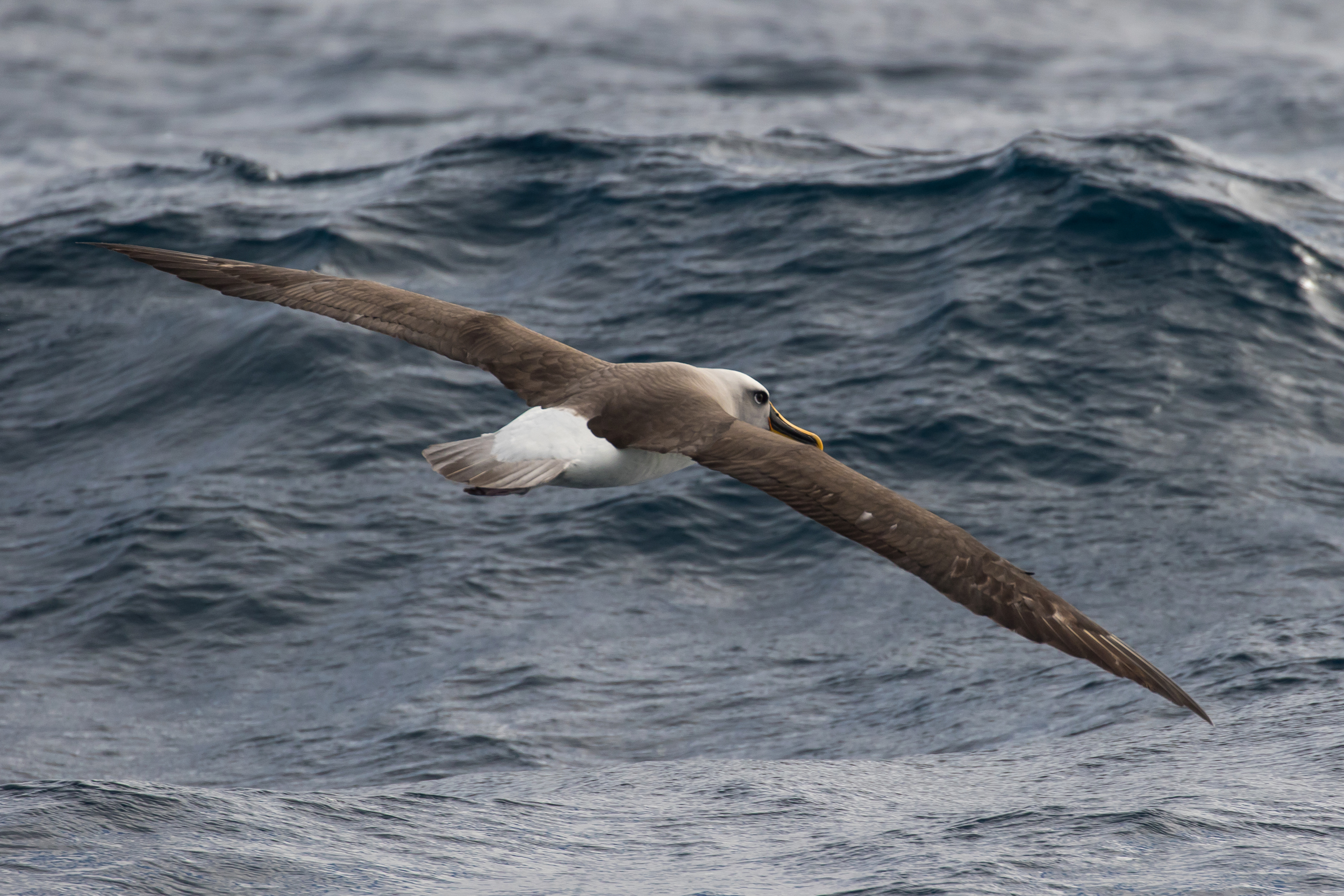
Soon enough the cry went up that a great Albatross was incoming. This was a Wandering Albatross (gibsoni), one of several seen during the day, including a coupe of juveniles. Later we had at least one exulans Wanderer and a Northern Royal Albatross.












We were also visited by a two Brown Skuas and a couple of Northern Giant Petrels.



Good numbers of stormies visited the slick during the day. Maybe as many as 40 Grey-backed Storm-Petrels fluttered through and I tried hard (but ultimately unsuccessfully) to get a clear, sharp picture of a close bird.



Later in the day they were joined by a few Wilson’s Storm-Petrel.
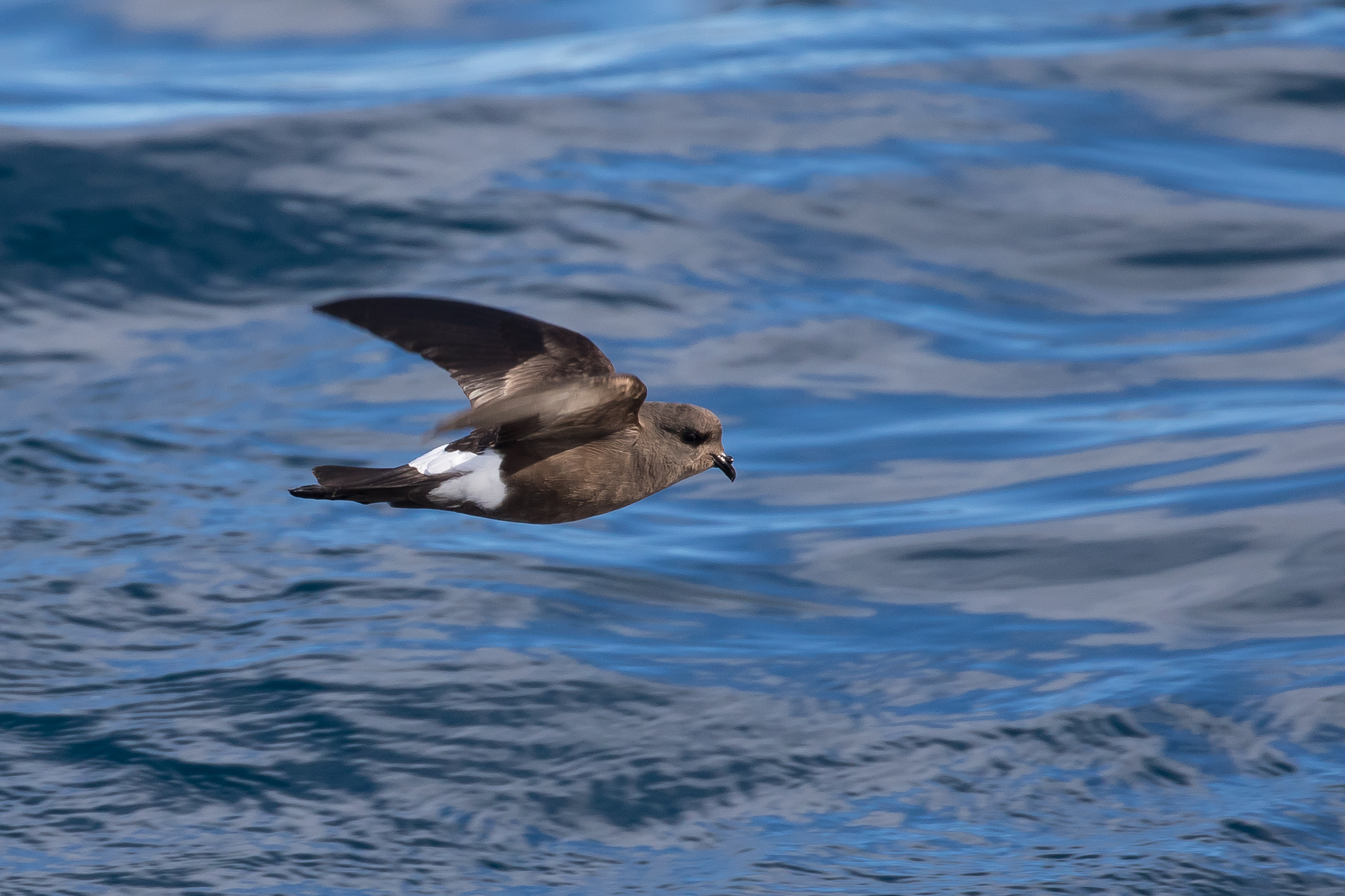
Twice an excited cry went up for a possible Diving Petrel, but on neither occasion was I quick and skilled enough to get on it. Indeed I think most missed both birds, which is a shame, because they are increasingly rare of SA.
Throughout the day I (and a few others it turns out) tried to get photos of the various prions that either circled the boat or picked their way along the slick of shark-liver oil and chum. Most of these, as expected, were Fairy Prions, but over the next few hours a few birds looked different, especially one with a much darker collar at around 11am. The Fairys are the easiest to pick out, either in the field or in photos. They have a wide black terminal band on their tail, and a smudge of grey under the wings.











The other species we get in SA are the “whalebirds”, so named because they feed on small scraps and prey driven t the surface by feeding whales, and were therefore used by early whalers as an indicator. The whalebirds have a much narrower black tail-band and a distinct collar, lacking the grey smudge under the wings. They differ from each other mainly in bill structure.
Careful inspection of photos has led various experts to various conclusions (or in some cases, no conclusions). Here I’ll do my best to identify the birds I photographed – I’m happy enough with these ticks, even if they would not pass muster for a formal record.
The first of the whalebirds is seen in the crap record shot below. I am calling this a putative Antarctic. The tail-band is narrow indicating it is a whale-bird, while the dark collar cuts off sharply to white under the wings. The bill is medium width and two-toned colour – dark with pale edges.


Next up, I managed a few poor shots of an obvious dark-collared bird (others got better pics than me). This bird overall seems darker than the previous one, and clearly has a broader, darker bill, though not broad enough for Broad-billed Prion. These features lead me (and others) to call this as Salvin’s Prion, though many say that Antarctic and Salvin’s are virtually inseparable in the field.


Finally, I managed only one focused photo of the bird below (and no others even out-of-focus that shed further light on its identity). In the field I recall this did not have the heavy bill of the earlier birds and so I believe this to be a Slender-billed Prion.
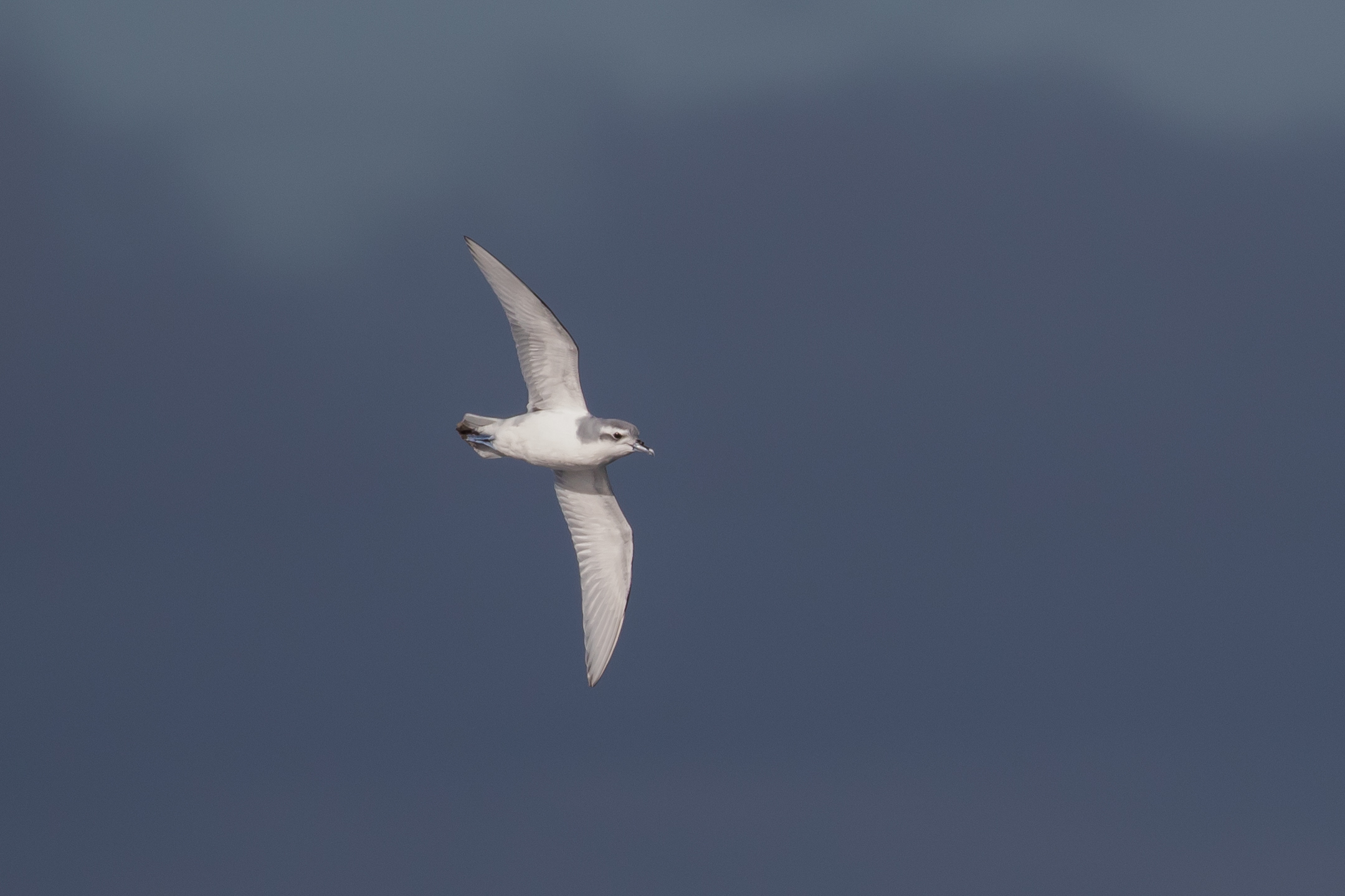
Interest was waning by early afternoon and at about 2pm we decided it was time to head back in. I wandered t the back of the boat and noticed another Giant Petrel on the water that had arrived without us noticing. Amazingly as I clocked it in bins I realized that this was the rarer (in an SA context) Southern Giant Petrel, told from its Northern relative by a greenish tinge to the tip of its bill instead of a pinkish tinge of Northern.

The slower than usual progress back to port meant it was 4pm by the time we docked, now too late for us to reach the forest north of Mt Gambier before dusk to try again for the RTBC. Instead we stopped for a coffee in Mt Gambier then bombed straight for Adelaide, sharing the 5 hour drive and rolling into my place at 9.30pm.
